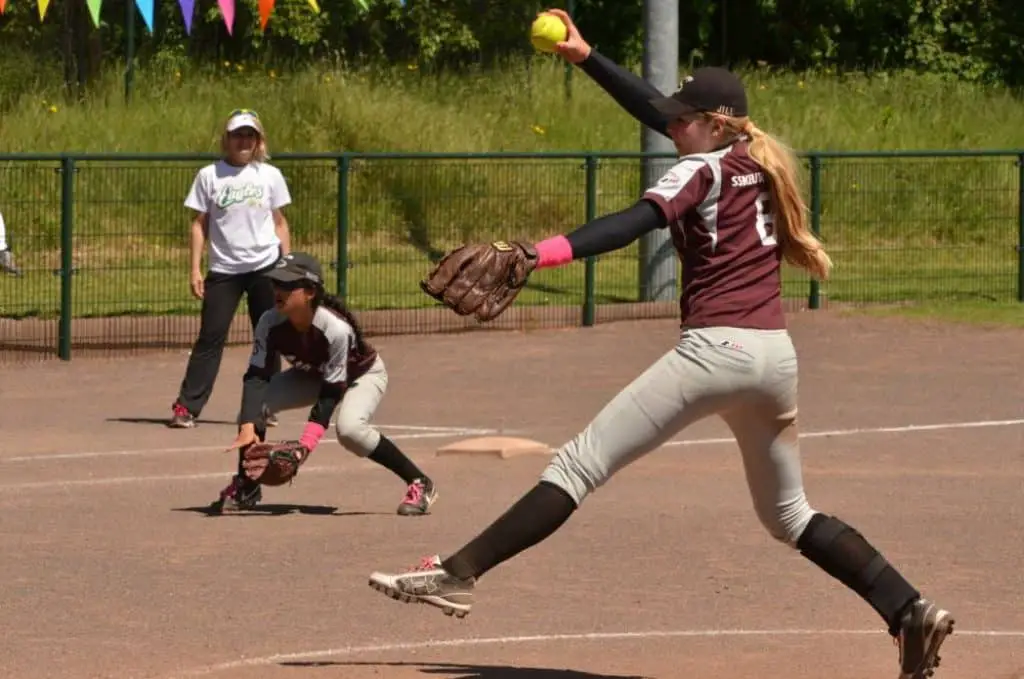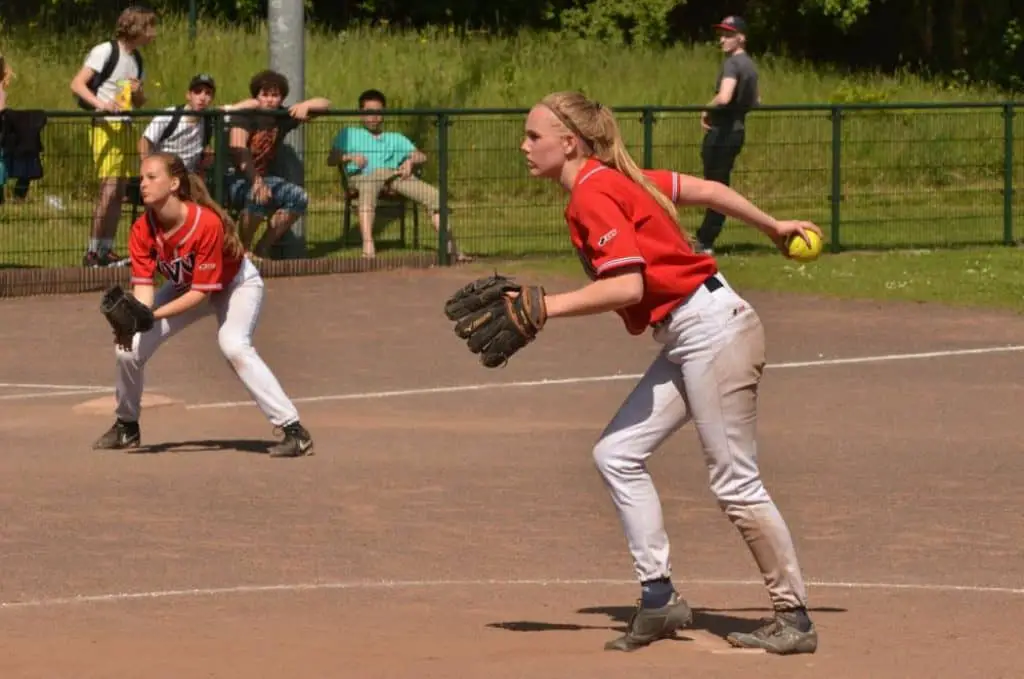Can You Pitch Overhand In Softball? (Detailed Answer!)
Pitching is probably the most important skill in softball. Pitchers are capable of putting their stamp on a game in a way no other position can.
They are the main reason why softball games are commonly low-scoring affairs.
One of the reasons why the pitchers can be so dominant is that, unlike in baseball, softball teams can usually keep their star pitcher on the field for the whole game.
And this is mostly due to one of the major differences between the two sports – the way pitchers throw the ball.
In softball, pitchers always pitch underhand. On the other hand, baseball pitchers almost exclusively throw overhand.
Seeing the data on how baseball pitches are significantly faster, many people wonder can you pitch overhand in softball.
The answer to this is not that simple and it involves many factors besides just the speed of the pitch.
Table of Contents
Can You Pitch Overhand In Softball?

The short answer to this question is no, softball pitchers can’t throw overhand.
There are many reasons for this, starting with the fact that the rules simply don’t allow it.
There’s even a specific rule on the prohibition of overhand pitching in the official rulebook of the World Baseball Softball Confederation.
On page 27, the rulebook states: “The delivery (of a softball pitch) must be an underhanded motion, with the hand below the hip and the wrist not farther from the body via the elbow.”
Of course, the rule was introduced due to the number of factors that make underhand pitches more suitable for the game of softball.
If the overhand pitching was allowed, the game would likely be much different from what we see today.
The mandatory underhand throw rule doesn’t apply to other players on the field who are free to throw however they like.
Why is Softball Underhand?

Before we dig deeper into reasons why softball pitchers throw the way they do, let’s look at how underhand pinching came to be in the first place.
Historically, softball developed as an indoor version of baseball.
It was first played as a way for baseball players to keep themselves in shape and occupied during cold winter months.
As it was played indoors, the field was smaller. The game was also slower and played with a bigger and softer ball.
To preserve their pitchers, coaches would often have them simply toss the ball, underhand. This kept the ball in play in the smaller field and kept everyone safer indoors.
As competitive softball started to take off, the underhand rule was established to accommodate less skilled players and remove the advantage the pitchers would have as there’s no raised pitching mound.
In addition, there are several practical reasons for this rule.
Making the Game Safer and More Interesting
The smaller field in softball also dictates the distance for pitching rubber to the home plate.
The softball pitcher stands 17.5 feet closer to the batter.
This means, even though the pitches are not as fast as in baseball, the hitters have less time to react.
Pro pitchers in baseball can throw 100 mph pitches, but their softball colleagues are not too far behind.
Even with a bigger and heavier ball, top pitchers in softball easily throw projectiles flying at around 70 miles per hour.
If they were allowed to throw overhand, their pitches would fly even faster. This would put batters at serious risk of being hit and injured by wild balls.
Especially considering without raised pitching mound.
Furthermore, it would make it a lot harder for batters to make contact with the ball, let alone hit it properly.
Of course, this would lead to dull and monotonous ballgames.
Less Stress on the Pitchers
Being a much more natural movement than overhand, underhand pitching is much easier on a pitcher’s arm.
There’s particularly less strain on the shoulder and elbow.
As most baseball pitchers can testify, this is a real problem and the reason why they don’t pitch the whole game and usually have a few days of rest between going on the field.
Most baseball leagues, especially at youth level, have a limited number of innings in which the same pitcher can throw.
On the other hand, softball pitchers often spend the whole game on the field. Furthermore, it’s not unusual for them to pitch in back-to-back games.
When pitching in softball, shoulders are closer to the body, in a more natural position with less weight and pressure put on them.
Also, the way the arm rotates when pitching overhand generates much more force applied to elbows and shoulders.
Easier for Beginners
Even though the softball played at collegiate and pro level is very high level, most of those who play it are either kids or recreational players.
This means that there are a lot of players involved in softball who don’t possess superior pitching skills.
In addition, a lot of kids play softball as a sort of preparation before they move on to baseball. For all of them, pitching underhand is much easier.
As an underhand throw involves more natural movement than an overhand, the mechanics of the pitch are much easier to learn.
After all, most of us when trying to throw or toss any object, do it with the underhand motion. Surely, this doesn’t mean that mastering the underhand pitch is simple.
Pitchers at the pro and college level have invested a ton of effort and countless hours of practice before they could throw the way they do.
Conclusion
As you can see, there are plenty of reasons why there’s no overhand pitch in softball.
There’s a lot of history behind it, but most of the reasons are purely practical and make the game safer, both for pitchers and other players.
Furthermore, underhand pitching results in more interesting and exciting games.
If we want to simplify things, we may say that overhand pitches provide more velocity, but underhand throwing means more stamina and more time a pitcher can spend on the field.
Obviously, baseball and softball are different and value these things differently. Also, it’s important to note that this has nothing to do with gender.
Even though softball is often considered a female-dominant sport, men playing softball also throw underhand.
And vice-versa, ladies playing baseball throw overhand pitches.




